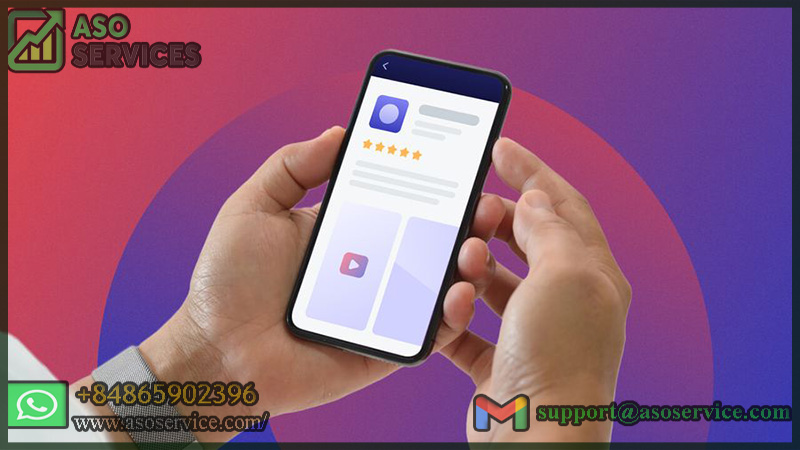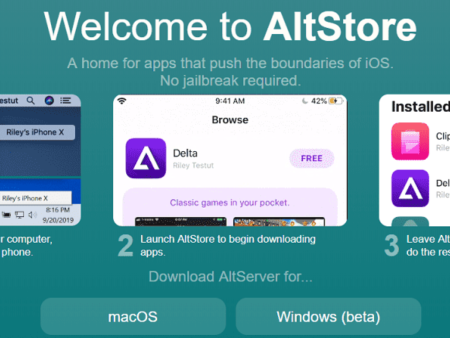The Essential Guide to App Store Optimization for iOS
-
02/03/2023
-
1063
-
1
- 1. Understanding the Importance of ASO
- 2. Conducting Keyword Research for App Store Optimization for iOS
- 3. Optimizing App Title and Description of App Store Optimization for iOS
- 4. Designing Eye-catching App Icons and Screenshots
- 5. Encouraging Positive User Reviews and Ratings of App Store Optimization for iOS
- 6. Tracking and Analyzing ASO Performance
- Conclusion
App Store Optimization for iOS is crucial to any successful iOS app marketing strategy. Understanding the fundamentals of ASO can help you increase your app's visibility, downloads, and revenue in the crowded app store marketplace.
Related posts
Unlocking the Power of Cost Per Install (CPI) Advertising
Mobile Ad Targeting: Strategies and Best Practices for Effective Campaigns
1. Understanding the Importance of ASO
In today's digital age, mobile apps have become an vital part of our lives, and as a result, the competition to get noticed in the app marketplace has become increasingly fierce. ASO refers to optimizing mobile apps to rank higher in the app store search results and increase visibility and downloads.
First, with millions of apps available in app stores, it can take time for users to find the ones they need. App store rankings heavily rely on ASO. The higher your app ranks in the app store, the more visible it is to users. ASO strategies incorporating relevant keywords and user reviews can significantly impact your app's ranking, leading to increased downloads and user acquisition.

Understanding the Importance of ASO, Source: Asoservice.com
Finally, ASO can help improve the overall user experience. When your app is optimized with relevant keywords and descriptions, users are likelier to download it, leading to higher engagement and retention rates. Furthermore, responding to user feedback and incorporating suggestions can continuously improve your app's user experience and functionality.
In conclusion, buy ASO services is crucial for app developers to increase their app's visibility, downloads, and overall success in the app marketplace. By understanding the importance of ASO and implementing effective strategies, developers can increase their chances of achieving their app's goals and reaching their intended audience.
2. Conducting Keyword Research for App Store Optimization for iOS
Keyword research is a critical aspect of App Store Optimization (ASO) as it helps you identify relevant and high-traffic keywords that potential users search for in the app store. Here are some steps to conduct keyword research for ASO on iOS:
Brainstorm Relevant Keywords: Start by brainstorming a list of relevant keywords that describe your app's features, functionality, and purpose. This will give you a foundation to build upon as you conduct further research.
Use Keyword Research Tools: Utilize keyword research tools such as App Annie, Sensor Tower, and Mobile Action to identify relevant and high-traffic keywords. These tools provide data on search volume, competition, and difficulty levels to help you narrow down your keyword list.
Analyze Competitors: Analyze the keywords your competitors target in their app titles, descriptions, and metadata. This will help you realize gaps in the market and potential keywords to target.
Balance Relevance and Search Volume: When selecting keywords, balancing relevance and search volume is essential. Choose keywords that accurately describe your app's features and purpose but have a high enough search volume to make an impact.
Incorporate Keywords Strategically: Once you have your target keywords, incorporate them into your app title, description, and metadata. Use them naturally and avoid keyword stuffing, negatively impacting your app's ranking.
By conducting effective keyword research, you can optimize your app for the right keywords, increasing its visibility and chances of being discovered by potential users. Regularly reviewing and updating your keyword strategy can help you stay ahead of the competition and improve your app's overall success.
3. Optimizing App Title and Description of App Store Optimization for iOS
Optimizing your app's title and description is a crucial aspect of App Store Optimization (ASO) as it is one of the first things potential users see when browsing the app store. Here are some tips for optimizing your app's title and description for ASO on iOS:
Create a Compelling Title: Your app's title should be concise, memorable, and accurately reflect its purpose and features. Use keywords in your title to increase its chances of appearing in relevant search results.
Craft a Compelling Subtitle: Your app's subtitle should complement the title by providing more information about your app's features and benefits. It should be concise and informative, helping users understand what your app does in just a few words.
Write an Engaging Description: Your app's description should provide more in-depth information about your app's features, benefits, and user experience. Use descriptive language and avoid technical jargon that may be unclear to users. Incorporate keywords strategically, but avoid keyword stuffing.
Highlight Unique Features and Benefits: Use your app's description to highlight the unique features and benefits that make it stand out. This can help potential users understand why they should download your app instead of others.
Use Visuals to Engage Users: Incorporate high-quality screenshots and app preview videos to showcase your app's features and user experience. Visuals can help users understand what your app does and make them more likely to download it.
Test and Refine Your Title and Description: Regularly review and test your app's title and description to see how they impact its visibility and downloads. Use data from app store analytics tools to adjust your title and description based on user behavior and engagement.
Optimizing your app's title and description for ASO can increase its chances of being discovered and downloaded by potential users. A compelling title and description accurately reflecting your app's purpose and unique features can help it stand out in a crowded app marketplace. You can increase keyword app installs by conducting these tips.
4. Designing Eye-catching App Icons and Screenshots
Designing eye-catching app icons and screenshots is a critical aspect of App Store Optimization (ASO), as they are the first visual elements that potential users see when browsing the app store. Here are some tips for designing eye-catching app icons and screenshots for ASO on iOS:
Keep It Simple: Your app icon should be simple and easily recognizable. Avoid using too many colors or intricate designs that may be difficult to see when scaled down to app icon size.
Use Appropriate Colors: Use colors that reflect your brand identity and complement your app's purpose and features. Choose colors that stand out but are not overly bright or distracting.
Create Consistency: Use consistent design elements across your app icon and screenshots to create a cohesive look and feel. This can help potential users recognize your app and distinguish it from competitors.
Highlight Unique Features: Use screenshots to showcase your app's unique features and benefits. Use descriptive language, arrows, or text overlays to draw attention to specific features or functionality.
Use High-Quality Images: Use high-quality images for your app screenshots to showcase your app's user experience and functionality. Use clear and easy-to-read fonts and ensure the images are correctly sized and formatted.
Test and Refine: Regularly review and test your app icon and screenshots to see how they impact your app's visibility and downloads. Use data from app store analytics tools to adjust your designs based on user behavior and engagement.
By designing eye-catching app icons and screenshots, you can increase your app's chances of being discovered and downloaded by potential users. An app icon and screenshots that accurately reflect your app's purpose and unique features can help it stand out in a crowded app marketplace and improve its overall success.
5. Encouraging Positive User Reviews and Ratings of App Store Optimization for iOS
Encouraging positive user reviews and ratings is an essential aspect of App Store Optimization (ASO) for iOS, as it can significantly impact an app's visibility and success in the app store. Here are some tips for encouraging positive user reviews and ratings:
Provide Great User Experience: The most effective way to encourage positive reviews and ratings is to provide a great user experience. Ensure that your app is easy to use, bug-free, and provides value to users. Engage with your users, respond to feedback, and provide excellent customer support.
Ask for Reviews and Ratings: Ask your users to leave a review or rating after using your app for a few days or weeks. Provide an in-app prompt or reminder, and make it easy for users to leave a review or rating without leaving your app.
Timing is Important: Timing is crucial when asking for reviews and ratings. Ask only a little early or too frequently, which can irritate your users. Wait until they have had enough time to use and explore your app before asking for their feedback.
Incentivize Positive Reviews: Offer incentives such as exclusive content, discounts, or other rewards to users who leave a positive review or rating. However, ensure that the incentives are reasonable and do not come across as bribery.
Address Negative Reviews: Respond to negative reviews and ratings politely and professionally. Address the user's concerns and offer solutions or explanations for any issues they may have faced. This can turn a negative review into a positive one.
Regularly Monitor and Respond to Reviews: Regularly monitor and respond to reviews and ratings, both positive and negative. Use feedback to improve your app and provide better customer support.
Encouraging positive user reviews and ratings is an ongoing process that requires effort and dedication. By providing a great user experience; asking for reviews and ratings at the right time, offering incentives, addressing negative reviews; and regularly monitoring and responding to feedback, you can improve your app's visibility and success in the app store.
6. Tracking and Analyzing ASO Performance
Tracking and analyzing App Store Optimization (ASO) performance is essential to improving your app's visibility, increasing downloads; and staying ahead of your competition. Here are some ways to track and analyze ASO performance for iOS:
Use App Analytics Tools: Apple provides built-in tools for iOS apps, including the App Store Connect dashboard and the Analytics tab in Xcode. These tools can provide valuable insights into your app's performance, including downloads, revenue, user engagement, and retention.
Track Keyword Rankings: Track your app's keyword rankings in the app store search results using third-party tools like App Annie, Sensor Tower, or Mobile Action. These tools can help you identify keywords driving downloads and areas where you can improve your ASO strategy.
Monitor User Reviews and Ratings: Monitor and track user reviews and ratings to get feedback on your app's performance and identify areas for improvement. Use this feedback to adjust your ASO strategy; improve your app's user experience, and encourage positive reviews and ratings.
Analyze Competitor Performance: Analyze your competitors' ASO strategies, including their keywords, app titles, descriptions, and visuals. Use this information to identify areas where you can differentiate your app; improve your app's ASO, and gain a competitive edge.
Conduct A/B Testing: Conduct A/B testing on different versions of your app's visuals; description, and keywords to see which versions perform best. Use this data to optimize your ASO strategy and improve your app's visibility and downloads.
Set Goals and KPIs: Set clear goals and key performance indicators (KPIs) for your ASO strategy, such as increasing downloads, improving keyword rankings; or increasing user engagement. Regularly review and adjust your ASO strategy based on your performance against these goals and KPIs.
By tracking and analyzing ASO performance, you can identify areas where you can improve your app's visibility, increase downloads, and stay ahead of your competition. Use app analytics tools, track keyword rankings; monitor user reviews and ratings, analyze competitor performance; using top app keyword ranking, and set clear goals and KPIs to improve your ASO strategy and drive success for your iOS app.
Conclusion
Following this guide's best practices and strategies; you can optimize your iOS app's visibility, attract more users, and ultimately drive success in the competitive app store marketplace.
Related posts
https://asoservice.com/app-installs-downloads
https://asoservice.com/keyword-app-installs
Thanks so much for reading this article.
Source: App Store Optimization services




































Leave a Reply
Your e-mail address will not be published. Required fields are marked *